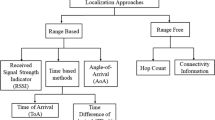Abstract
WSN is a dynamic network of randomly deployed tiny sensor nodes to monitor the physical ambient conditions, healthcare services, military surveillance, movements and tracking of vehicles or other targets etc. Sensing generates continuous streams of data which are distributed throughout the network. This distributed data is retrieved by various applications through numerous appropriate means. Query based retrieval method is the most popular general purpose method for data extraction. In response to queries injected into the network nodes communicate data among themselves or to the base-station. Communication traffic thus generated is highly energy consuming activity. It drains out limited energy available with a node thereby rendering it useless as replenishment of energy is not possible in most of the deployments therefore efficient use of energy is the main focus to prolong the life of a WSN. Reduction of communication traffic is the most effective mean to achieve energy efficiency. In this paper we have proposed an approach towards this end which employs optimization of multiple queries at the base station and data compression at individual nodes resulting in quantitative reduction in communication traffic. Quality of data is not compromised in the process.









Similar content being viewed by others
References
Akyildiz, I. F., Su, W., Sankarasubramaniam, Y., & Cayirci, E. (2002). Wireless sensor networks: A survey. IEEE Computer, 38(4), 393–422.
Chen, C., Ma, J., & Yu, K. (2006). Designing energy-efficient wireless sensor networks with mobile sinks. In ACM conference on embedded networks sensor system (pp. 195–206).
Cheng, S., & Wu, M. (2008). Optimization of multilevel power adjustment in wireless sensor networks. In 14th international conference on distributed multimedia systems (pp. 109–121).
Olston, C., Loo, B. T., & Widom, J. (2001). Adaptive precision setting for cached approximate values. In ACM SIGMOD, International Conference on Management of Data.
Jain, A., & Chang, E. Y. (2004). Adaptive sampling for sensor networks. In Proceedings of the 1st international workshop on data management for sensor net works (DMSN’04). Toronto, Canada.
Jain, A., Chang, E. Y., & Wang, Y.-F. (2004). Adaptive stream resource management using Kalman Filters. In Proceedings of the ACM SIGMOD/PODS Conference (SIGMOD’04). Paris, France.
Guestrin, P., Bodik, R., Thibaux, R., Paskin, M., & Madden, S. (2004). Distributed regression: An efficient framework for modeling sensor network data. In Proceedings of the 3rd international symposium on information processing in sensor networks (IPSN’04). Berkeley, USA.
Le Borgne, Y., & Bontempi, G. (2005). Round Robin cycle for predictions in wireless sensor networks. In Proceedings of the 2nd international conference on intelligent sensors, sensor networks and information processing (issnip’05). Melbourne, Australia.
Deshpande, A., Guestrin, C., Madden, S. R., Hellerstein, J. M., & Hong, W. (2004). Model-driven data acquisition in sensor networks. In Proceedings of the 30th VLDB conference (VLDB’04). Toronto, Canada.
Goel, S., & Imielinski, T. (2001). Prediction-based monitoring in sensor networks: Taking lessons from mpeg. ACM Computer Communication Review, 31(5), 82–98.
Silvia, S., & Römer, K. (2006). An adaptive strategy for quality-based data reduction in wireless sensor networks. In Proceedings INSS 2006.
Xiang, S et al. (2007). Two-tier multiple query optimization for sensor networks. In Proceedings of the 27th ICDCS.
Xiang, S., Lim, H. B., & Tan, K. L. (2006). Impact of multi-query optimization in sensor networks. In Proceedings of the 3rd workshop on data management for sensor networks: In conjunction with VLDB (DMSN’06)(pp. 7–12). Seoul, Korea.
Bonnet, P., Gehrke, J., & Seshadri, P. (2001). Towards sensor database systems. In Mobile data management, Lecture Notes in Computer Science (Vol. 1987, pp 3–14). Berlin: Springer.
Bonnet, P., Gehrke, J., & Seshadri, P. (2000). Querying the physical world. IEEE Personal Communications, 7(5), 10–15.
Madden, S. R., Franklin, M. J., Hellerstein, J. M., & Hong, W. (2005). Tinydb: An acquisitional query processing system for sensor networks. ACM Transactions on Database Systems (TODS), 30(1), 122–173.
Author information
Authors and Affiliations
Corresponding author
Rights and permissions
About this article
Cite this article
Jindal, V., Verma, A.K. & Bawa, S. Quantitative Reduction in Communication Load for Energy Efficiency in WSN. Wireless Pers Commun 85, 2795–2810 (2015). https://doi.org/10.1007/s11277-015-2933-x
Published:
Issue Date:
DOI: https://doi.org/10.1007/s11277-015-2933-x




